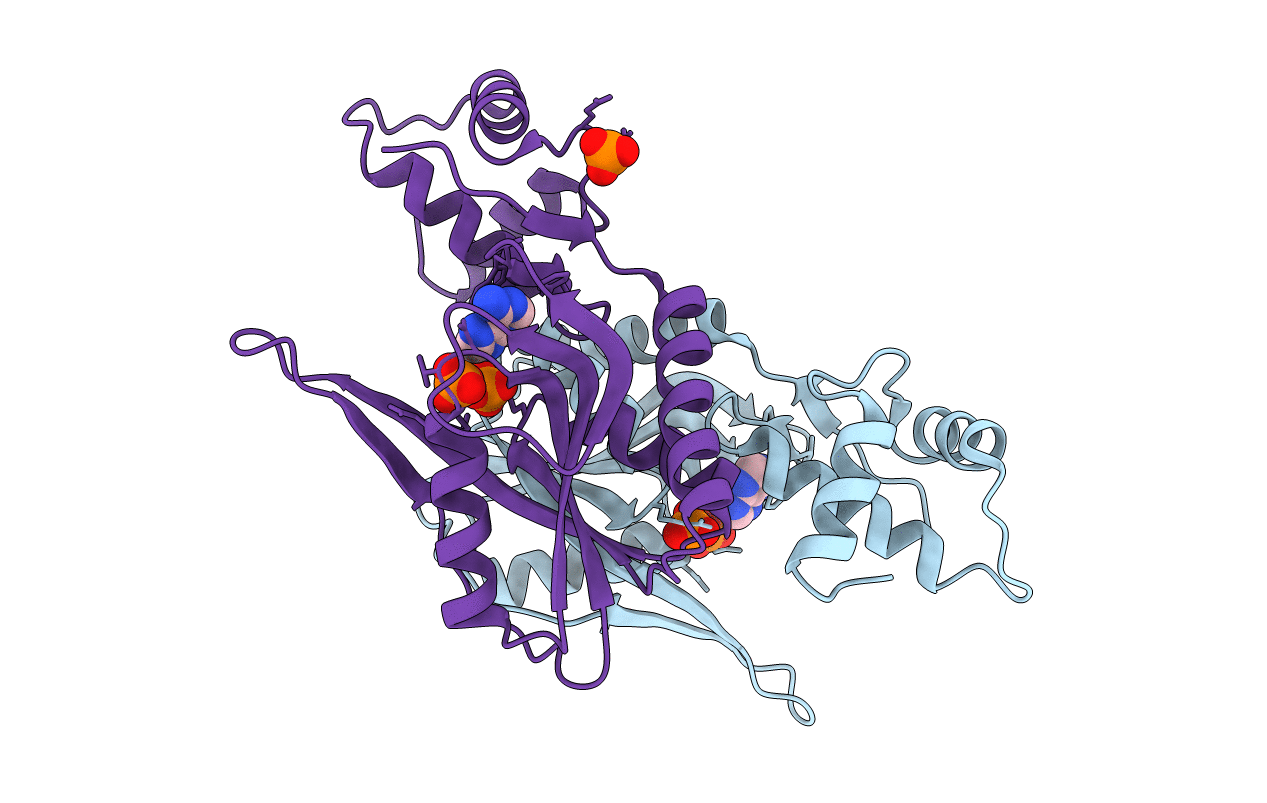
Deposition Date
2014-06-16
Release Date
2014-07-30
Last Version Date
2024-05-08
Entry Detail
PDB ID:
4TRC
Keywords:
Title:
Sulfolobus solfataricus adenine phosphoribosyltransferase with adenine
Biological Source:
Source Organism:
Sulfolobus solfataricus (Taxon ID: 273057)
Host Organism:
Method Details:
Experimental Method:
Resolution:
2.40 Å
R-Value Free:
0.24
R-Value Work:
0.20
R-Value Observed:
0.20
Space Group:
P 61


